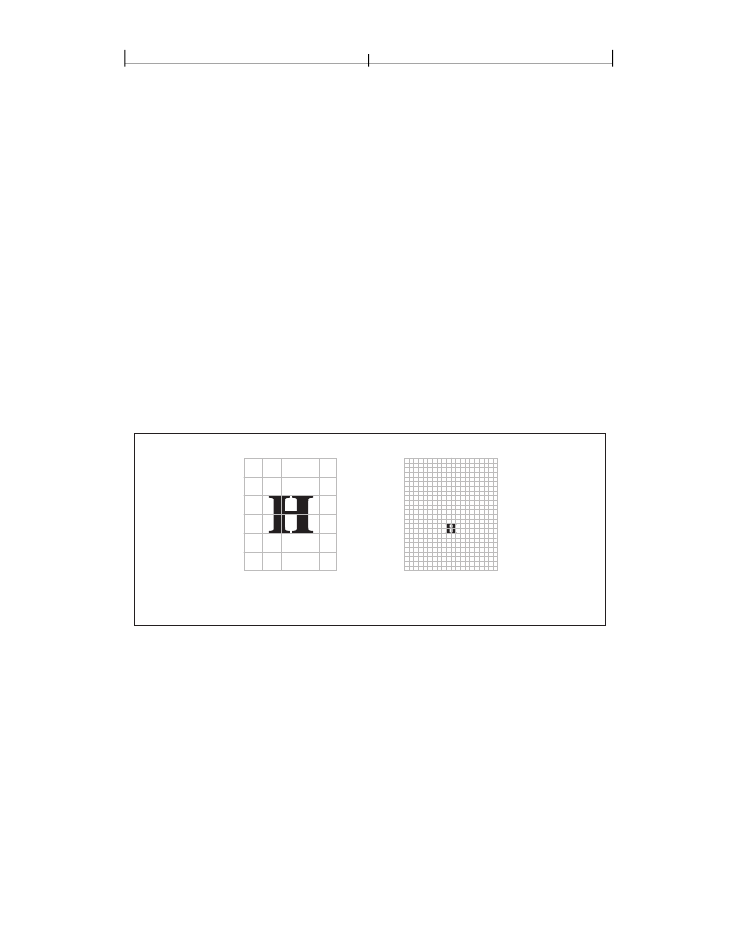
CHAPTER 4
200
Graphics
nate system is called its
device space.
The origin of the device space on different
devices can fall in different places on the output page; on displays, the origin can
vary depending on the window system. Because the paper or other output me-
dium moves through different printers and imagesetters in different directions,
the axes of their device spaces may be oriented differently. For instance, vertical
(y)
coordinates may increase from the top of the page to the bottom on some
devices and from bottom to top on others. Finally, different devices have different
resolutions; some even have resolutions that differ in the horizontal and vertical
directions.
If coordinates in a PDF file were specified in device space, the file would be
device-dependent and would appear differently on different devices. For exam-
ple, images specified in the typical device spaces of a 72-pixel-per-inch display
and a 600-dot-per-inch printer would differ in size by more than a factor of 8; an
8-inch line segment on the display would appear less than 1 inch long on the
printer. Figure 4.2 shows how the same graphics object, specified in device space,
can appear drastically different when rendered on different output devices.
Device space for
72-dpi screen
Device space for
300-dpi printer
FIGURE 4.2
Device space
User Space
To avoid the device-dependent effects of specifying objects in device space, PDF
defines a device-independent coordinate system that always bears the same rela-
tionship to the current page, regardless of the output device on which printing or
displaying occurs. This device-independent coordinate system is called
user
space.